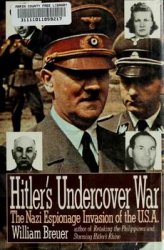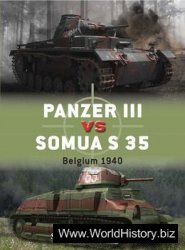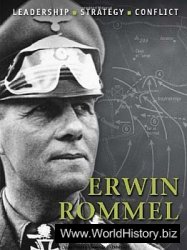Cartography is the art of making maps and charts. Throughout the first part of the 19th century, the U. S. government spent a great deal of time and money on expeditions to map the land that the country had acquired, especially the vast Louisiana Purchase. Meanwhile, the older and more heavily settled areas of the country received very little attention from government cartographers. These areas eventually became the battlegrounds for much of the CiviL War, and so the oversight created a major logistical problem for commanders on both sides, necessitating the creation of thousands of new maps.
The Union was better prepared to make the maps that were needed, since it had several experienced mapmaking units already in place, including the U. S. Coastal Survey and the Navy’s Hydrographic Office. The most important was the Union army’s Engineering Corps, which included a group of specialists in cartography known as the Topographical Bureau. The bureau had been created in 1816 and by the time of the Civil War had grown to 45 men under the command of Col. William E. Merrill. Only seven of the 45 cartographers resigned their commissions to join the Confederacy when the war broke out, and only two of the seven were senior members of the bureau. In addition to retaining the majority of the nation’s experienced military cartographers, the Union also had better technology for duplicating maps. The North’s prosperity allowed for the purchase of lithographic presses, which had only been recently developed. Although very heavy, these presses could travel with an army, and they allowed for high-quality reproductions of maps at a rapid pace.
The only real advantage that the Confederacy enjoyed in the creation of maps was that the war was largely fought in their home territory. This made it easier to make accurate maps, since local residents of an area that was being mapped could generally be counted on for assistance. However, this benefit was largely negated by other obstacles confronting Confederate mapmakers. For the first year of the war, the Confederacy had no entity responsible for coordinating mapmaking operations. Not until Robert E. Lee took command of the Army of Northern Virginia in June 1862 was a topographical department established, under the command of Capt. Albert H. Campbell.
Campbell’s staff was small, and the materials needed for mapmaking were in short supply in the South, so it was
Impossible for the Confederate mapmakers to produce anywhere near as many maps as their Union counterparts. Even the Confederate capital of Richmond was not completely mapped until early 1863, when the war was nearly half over. Campbell also did not have modern technology for duplicating maps, and so the maps given to Confederate field commanders tended to be much cruder than the maps used by the Union field commanders.
Despite the Union’s cartographic advantages over the Confederacy, the first months of the war were largely fought without good maps on either side. During the Peninsular campaign of 1862, for example, leaders on both sides of the conflict were hampered by their poor understanding of local geography. Confederate general Richard Taylor wrote that “Confederate Commanders knew no more about the topography of the country than they did about Central Africa.” Union general George B. McClellan concurred, noting that “good maps were not to be found.” As the war progressed, however, such complaints were less frequent. Indeed, Northern mapmakers in particular became an industry unto themselves. In 1864, the final full year of the war, the Union’s various mapmaking bureaucracies produced 43,000 maps and 44,000 nautical charts. By the end of the year, virtually the entire Confederacy had been mapped.
Confederate mapmakers could not approach the level of production achieved by their Union counterparts, although they did have some notable successes. The Confederacy’s finest mapmaker was Jedediah Hotchkiss, a self-taught cartographer who was on the staff of Gen. Thomas J. (Stonewall) Jackson. Shortly after joining the Confederate army in March 1862, Hotchkiss was instructed to make the maps needed for Jackson’s Shenandoah Valley Campaign. He responded by producing what are arguably the finest maps created by any cartographer on either side of the war. Jackson went on to defeat a numerically superior Union force, and undoubtedly Hotchkiss’s maps played an important role in the victory.
Of course, the Union’s cartographers had a few successes of their own. Perhaps the most significant occurred in 1864, when a group of mapmakers was ordered to help make the preparations for Sherman’s March through Georgia. Under the direct supervision of Colonel Merrill, they completed their “Map of Northern Georgia” on May 2, 1864. The map’s level of accuracy was an impressive achievement, given that it was created by men working in enemy territory. And even when it was inaccurate, the map enabled Union commanders to coordinate their actions, since they were all working off of the same map.
Cartographers on both sides played an important role as the Civil War unfolded. By the middle of 1862, map-makers were providing invaluable intelligence, often at a dizzying pace. Despite their valuable service, however, they received little credit during or after the war. Indeed, they continue to remain largely obscure; their maps are not often reproduced, and mention of their work is rarely incorporated into discussions of tactics AND strategy.
Further reading: Jedediah Hotchkiss, Make Me a Map of the Valley: The Civil War Journal of Stonowall Jackson’s Cartographer, ed. Archie P. McDonald (Dallas: Southern Methodist University Press, 1973); Daniel D. Nettesheim, Topographical Intelligence and the American Civil War (Fort Leavenworth, Kans.: U. S. Army Command and General Staff College, 1978); Richard W. Stephenson, Civil War Maps: An Annotated List of Maps and Atlases in the Library of Congress (Washington, D. C.: Library of Congress, 1989).
—Christopher Bates
Cary, Mary Ann Shadd (1823-1893) activist, author, educator, journalist
Mary Ann Shadd Cary was a free-born African-American teacher, author, activist, and journalist. Compelled by a deeply rooted commitment to activism, she spoke out on behalf of fugitive slaves and against both slavery and racism, most famously in the newspaper the Provincial Freeman.
Born to free African Americans on October 9, 1823, Mary Ann Shadd was the first of 13 children. She spent her earliest years in Delaware and Pennsylvania. Educated by Quakers and raised Roman Catholic, Shadd distrusted organized mainstream religion because of its role in supporting slavery. In religion, as in everything else, she believed that African Americans should not assimilate but, rather, should develop their own culture while taking full measure of the opportunities of the nation as a whole.
Shadd worked as a teacher in several Northern cities before she moved with her brother to Canada West in 1850. A region roughly surrounding the Canadian side of the Great Lakes, Canada West was a common destination for escaped slaves. Initially, Shadd taught in Canada West, a part of her salary supplied by the American Missionary Association, a relationship she later regretted. In 1852 she published a 44-page pamphlet, Notes on Canada West (1852), intended to help fugitive slaves reach Canada and prosper. The pamphlet informed prospective black immigrants of local crop yields, terrain, soil, and climate conditions.
In 1853 Shadd began a career as a writer and editor. Samuel Ringgold Ward offered her a position with the Provincial Freeman, a journal written for the men and women of Canada West who had escaped to freedom. Shadd soon became editor of the paper, and her writing and activism made her a spokesperson for fugitive slaves as a whole.
She participated in antislavery politics with zest and vigor, wading right into the often messy fights among different factions. Expressing strong opinions, Shadd clashed with fellow writers and social workers who viewed African Americans less as citizens than as victims and refugees. She also denounced the Refugee Home Society, claiming that it offered no great advantages over the refugee resettlement programs of the Canadian government. Her strident editorials alienated many supporters, and the paper failed in 1859.
In 1856 Shadd met and married Thomas G. F. Cary, with whom she had a daughter and a son. Thomas Cary died in November 1860. In 1863 Cary, now widowed, returned to the United States to assist in the Civil War. She served as a recruiting agent for the Union army in Indiana, Ohio, and Michigan, and helped organize an African-American regiment. After the war she resettled in Washington, D. C., and from 1870 to 1874 she served as principal at a public school for black children.
Around this time Cary began to engage in the movement for women’s rights. She joined the National Woman Suffrage Association, addressing that body in 1878. In 1880 she founded the Colored Woman’s Progressive Franchise Association, and she returned to Canada in 1881 to organize a suffrage event. Not content with her considerable accomplishments, Cary also joined the student body of Howard University, taking evening classes in pursuit of a degree in law. It was granted in 1883, when Cary was 60 years old. She testified before the House of Representatives’ Judiciary Committee to press for her right to vote, and she became one of the few women allowed to vote in elections during Reconstruction.
To the very end Mary Ann Shadd Cary denounced begging and charity as a solution for African Americans and advocated vigorous self-improvement and self-reliance. She died of cancer on June 5, 1893, leaving a powerful legacy as a journalist, teacher, and social reformer.
See also women’s status and rights.
Further reading: Kathy L. Glass, Courting Communities: Black Female Nationalism and Syncrenationalism in the Nineteenth-century North (New York: Routledge, 2006); Jane Rhodes, Mary Ann Shadd Cary: The Black Press and Protest in the Nineteenth Century (Bloomington: Indiana University Press, 1998).
—Fiona Galvin
Catto, Octavius V. (1839-1871) activist, minister Minister, activist, and reformer, Octavius Catto was born and raised in Philadelphia, Pennsylvania, and educated at the Institute for Colored Youth, a Quaker-run school for African Americans. Catto had a great deal of skill as an orator, and after graduation he followed his father William into the ministry. He quickly became a prominent leader of Philadelphia’s African-American community and an ardent civil rights activist.
Philadelphia was known in the antebellum era for its hostility toward people of color. After a visit to the city, Frederick Douglass wrote, “There is not perhaps anywhere to be found a city in which prejudice against color is more rampant than in Philadelphia.” Catto was not deterred, however. He was particularly concerned with voting rights, which had been extended to Pennsylvania’s African Americans by the state constitution of 1790 and then revoked by an act of the state legislature in 1838. In hopes of regaining the vote, Catto led petition drives, attended state and national meetings of African-American leaders, gave countless speeches, and organized election day protests. The only tangible result of Catto’s efforts was increased violence against Philadelphia’s African-American population, including an 1849 riot that received national attention.
During the Civil War, Catto lobbied for the enlistment of African-American troops, believing that men who had taken up arms for the United States could not possibly be denied their rights as citizens. When the word came in 1863 that government would begin to accept black regiments, Catto organized a group of 100 volunteers. They traveled to Harrisburg and, after some reluctance on the part of Governor Andrew Curtin, were mustered into the Union army as part of the Sixth U. S. Colored Infantry.
After the war, Catto continued his work, and he was deeply gratified by the passage of the Fieteenth Amendment in 1870. In October 1871, Philadelphia’s first elections after the amendment’s passage, Catto traveled around town exhorting all African Americans to vote. As in 1849, there was a riot, and this time Catto was killed. His funeral was attended by thousands of people, and according to one eyewitness, “Not since the funeral cortege of Abraham Lincoln has there been one as large or as imposing in Philadelphia.” Catto’s murder was an early indication of what was to become a recurring theme of the Reconstruction era—legal equality for African Americans did not necessarily translate into actual equality.
See also race and racial conelict.
Further reading: Octavius Catto, Our Al-ma Mater: An Address Delivered at Concert Hall on the Occasion of the Twelfth Annual Commencement of the Institute for Colored Youth, May 10th, 1864 (Philadelphia: Historic Publications, 1969); Roger Lane, William Dorsey’s Philadelphia and Ours: On the Past and Future of the Black City in America (New York: Oxford University Press, 1991).
—Christopher Bates




 World History
World History









